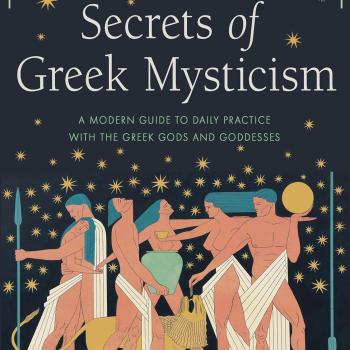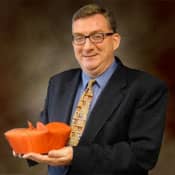"Conclave" is one of those Catholic words few take note of, at least until it takes place. Then, notes author John Allen, it "will be tossed about liberally." Today some six thousand journalists have descended on Rome, with an equal number of police and antiterrorist personnel. For a few weeks the eyes of the whole world focus on the conclave, which Allen calls "the greatest show on earth."
It's the stuff of high drama: a long line of men in red file into the Sistine Chapel, the doors locked behind them. They cast ballots kneeling before the altar, saying: "I call as my witness Christ the Lord, who will be my judge, that my vote is given to the one who before God I think should be elected." If no one is elected, they debate among themselves. They vote again. And, quite possibly, again. If a candidate gains a majority of two-thirds (simple majority if voting goes over eight days), he's elected pope.
It's more than white smoke. The Dean of the College of Cardinals asks: "Do you accept your canonical election as supreme pontiff?" The new pope answers, "Accepto" (Latin for "I accept"). The Dean asks what name he chooses. (This custom goes back to 533, when a Bishop Mercury, a name considered too pagan, was elected.) The pope has his choice of small, medium, or large cassocks specially prepared by Gamarelli's. Then he is led to the central window of St. Peter's Basilica, where the senior cardinal deacon addresses the crowds in Latin:
I announce to you a great joy. We have a Pope, the Most Eminent and Most Reverend Lord Cardinal of the Holy Roman Church, _________________, who has taken for himself the name ______.
And then the drama begins.
Originally the Roman clergy and people elected popes, later just the clergy. By the 10th century, the "Dark Century," local rulers made and unmade pontiffs at will. Prince Alberic II of Rome appointed five, the last his son John XII (955-963). Later Nicholas II (1059-1061) made papal elections the domain of the cardinals, Rome's senior clergy of Rome, the "hinge" (cardo in Latin) between the pope and Rome's parishes. (Later the title was extended to bishops outside Rome.)
The current conclave replaces a retired pope, the first time since 1294. The conclave process had only been instituted twenty years earlier under Gregory X. Previous elections lasted months, even years. In 1241, it took seventy days to elect Celestine IV, who died seventeen days later. It took three years to elect Gregory X. Impatient locals literally ripped the roof off the cardinals' meeting place. After Gregory, electors were locked in with a key (in Latin, cum clave) and weren't allowed out until they elected a pope.
In 1377, Gregory XI returned the papacy to Rome after a series of French popes in Avignon. After his death in 1378, rioting locals wanted an Italian successor. A guard at the conclave told the cardinals: "You run the risk of being torn to pieces if you do not elect an Italian." Bartolomeo Prignano was elected. When the French cardinals got far enough away from Rome they elected their own pope and returned to Avignon. The two popes excommunicated each other, beginning the Great Schism, which lasted until 1415.
Not every cardinal wants to be pope. St. Charles Borromeo (1538-1584) reputedly refused it. In 1605, St. Robert Bellarmine came close to being elected the first Jesuit pope, a prospect he dreaded. (As of 2013, there's never been a Jesuit pope.) In the 1823 conclave, the future Pope Leo XII (1823-1829) said: "Don't bother with me; you would only be electing a corpse." St. Pius X (1903-1914) openly wept. When Cardinal Albino Luciani was elected in 1978, he said: "May God forgive you for what you have done!"
Not all conclaves have occurred in Rome. After Pope Pius VI died in 1799 a prisoner of Napoleon Bonaparte, the Holy See was in complete disarray. Napoleon had imprisoned several cardinals. In 1800, a conclave was held on the Island of San Giorgio. Cardinal Luigi Barnaba Chiaramonte of Imola took the name Pius VII in tribute to his predecessor. He too would be imprisoned for standing up to Napoleon.
For centuries, Catholic monarchs reserved the right to veto papal elections. In the 1903 conclave, the leading candidate was Cardinal Mariano Rampolla, Leo XIII's Secretary of State. But Emperor Francis Joseph felt Rampolla was hostile to Austrian interests, so Cardinal Jan Puszyna of Krakow (an area under Austrian control) vetoed Rampolla on his behalf. After Cardinal Giuseppe Sarto of Venice was elected pope, one of his first acts was to ban this privilege.
When he was asked in 1997 whether he really believed the Holy Spirit chose the pope, then-Cardinal Joseph Ratzinger answered:
I would not say so in the sense that the Holy Spirit picks out the pope, because there are too many contrary instances of popes the Holy Spirit obviously would not have picked. I would say that the Holy Spirit does not exactly take control of the affair, but rather like a good educator, so it were, leaves us much space, much freedom, without entirely abandoning us.
So who will be the new pope? Only God and the cardinals know, but historically the odds favor a short conclave. The longest of the 20th century was five days in 1922, when Milan's Cardinal Achille Ratti was elected as Pius XI. A champion mountain climber and Vatican librarian, he had only been a Cardinal for eight months. The shortest was in 1939, when Cardinal Eugenio Pacelli was elected in two days and three ballots as Pius XII. Blessed John Paul II was elected in three days, and Benedict XVI in two. If this trend continues, there should be a new pope by the end of the week at the latest, God willing, of course.
12/2/2022 9:05:38 PM





